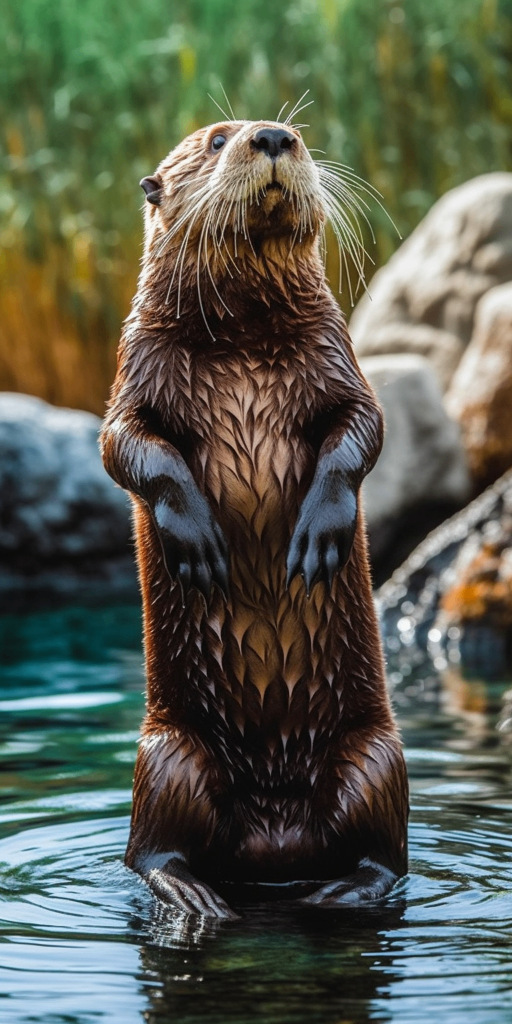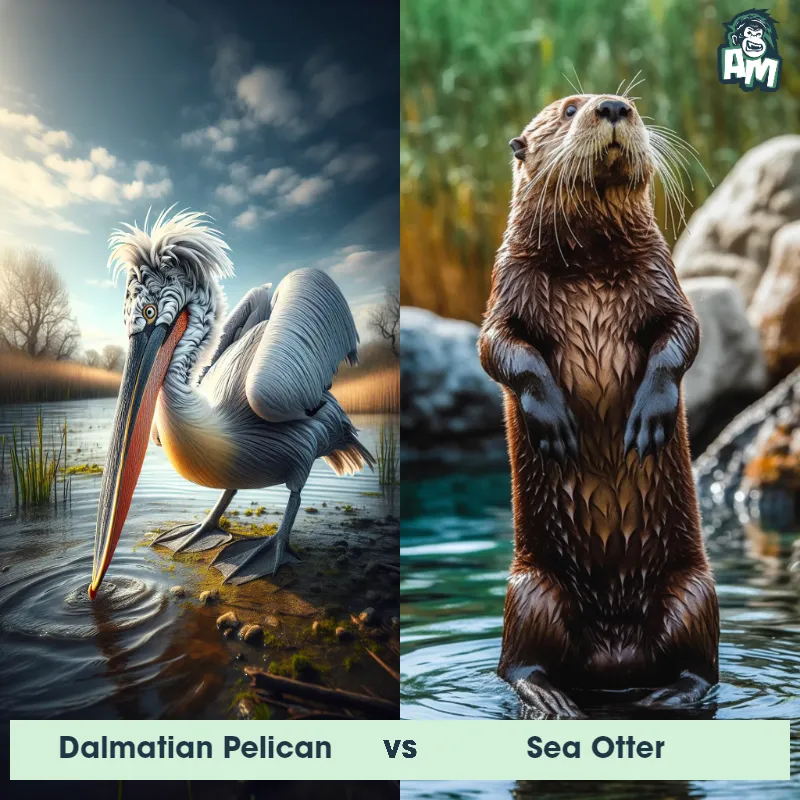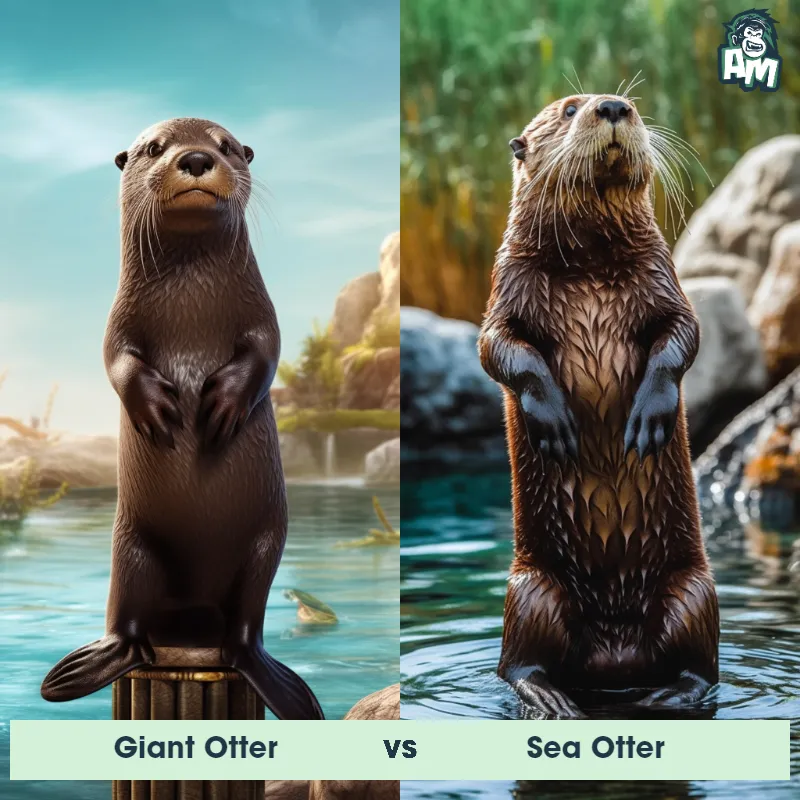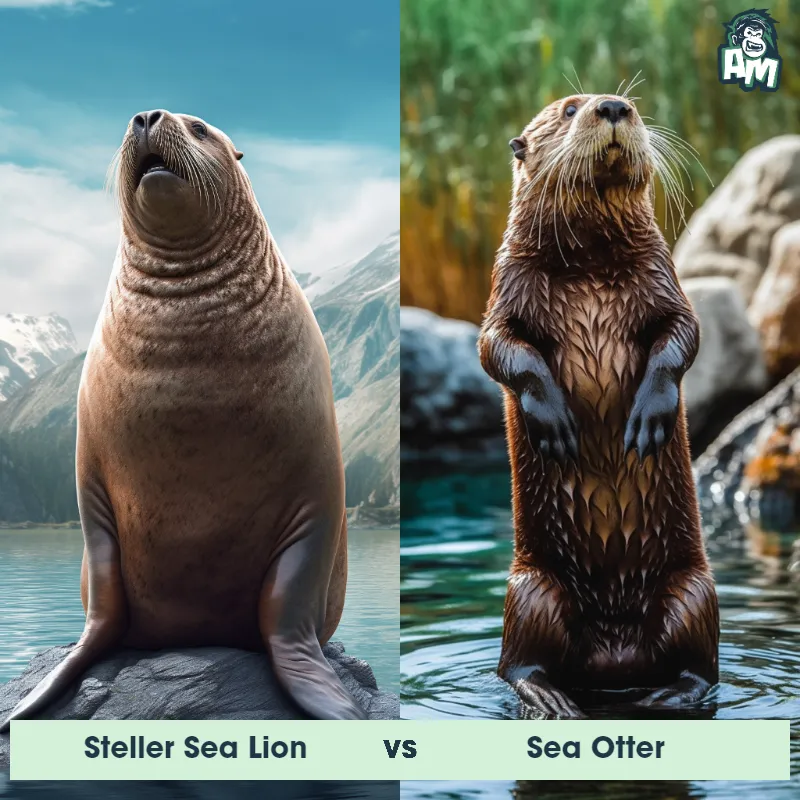The Sea Otter
The Sea Otter is a marine mammal known for its playful behavior and its dense, water-repellent fur. It has a streamlined body with webbed feet and a thick, muscular tail, which allows it to swim and maneuver effortlessly in the water. Sea otters have small heads with adorable round ears and expressive eyes. They are the heaviest members of the weasel family Mustelidae, and their fur comes in various shades, ranging from dark brown to almost black.

| Sea Otter | |
|---|---|
| Size | Up to 4 feet (1.2 meters) |
| Weight | 35-100 pounds (16-45 kilograms) |
| Speed | Speed: 5-6 mph (8-9.6 km/hr) |
| Key Strength | Strong swimming and diving abilities |
| Biggest Weakness | Lack of physical aggression |
| Scientific Name | Enhydra lutris |
| Family | Mustelidae |
| Habitat | Coastal waters |
| Geography | Northern and eastern Pacific Ocean |
| Diet | Clams, mussels, and other shellfish |
| Lifespan | 10 years - 15 years |

The Sea Otter
The Sea Otter is a marine mammal known for its playful behavior and its dense, water-repellent fur. It has a streamlined body with webbed feet and a thick, muscular tail, which allows it to swim and maneuver effortlessly in the water. Sea otters have small heads with adorable round ears and expressive eyes. They are the heaviest members of the weasel family Mustelidae, and their fur comes in various shades, ranging from dark brown to almost black.
Fun Fact: Sea Otters are one of the few animals to use tools, such as rocks, to crack open their prey. They will sometimes float on their backs and use a rock on their chest to smash open shells or clams, proving their extraordinary intelligence and adaptability.
| Sea Otter | |
|---|---|
| Size | Up to 4 feet (1.2 meters) |
| Weight | 35-100 pounds (16-45 kilograms) |
| Speed | Speed: 5-6 mph (8-9.6 km/hr) |
| Key Strength | Strong swimming and diving abilities |
| Biggest Weakness | Lack of physical aggression |
| Scientific Name | Enhydra lutris |
| Family | Mustelidae |
| Habitat | Coastal waters |
| Geography | Northern and eastern Pacific Ocean |
| Diet | Clams, mussels, and other shellfish |
| Lifespan | 10 years - 15 years |
Sea Otter Matchups
We use AI to simulate matchups between the Sea Otter and other animals. Our simulation considers size, strength, and natural predatory behaviors to determine the most likely outcome.

Can't find the Matchup you want?
Create Your Own MatchupSea Otter: Diet, Predators, Aggression, and Defensive Behaviors
What do Sea Otters eat?
Sea Otters primarily feed on a diet of marine animals such as crabs, sea urchins, mollusks, and fish. They are known to use tools such as rocks to break open hard-shelled prey like clams.
Do Sea Otters have any predators?
Sea Otters face predation from apex predators such as sharks and killer whales. Land predators such as bears and eagles may also prey on Sea Otters, especially when they are young or vulnerable.
Are Sea Otters aggressive?
Sea Otters are not typically aggressive towards humans or other animals. However, they may become territorial or defensive if they feel threatened or if their pups are in danger.
Do Sea Otters fight?
Sea Otters may engage in physical confrontations, especially during mating season or when competing for food or territory. These fights can involve biting, scratching, and vocalizations to establish dominance.
How do Sea Otters defend themselves?
Sea Otters primarily rely on their agility and speed to evade predators. They are excellent swimmers and can quickly escape danger by diving underwater or seeking refuge in kelp forests. Additionally, they may vocalize loudly to alert nearby otters of potential threats.
What is the Sea Otter's biggest weakness in a fight?
Despite their agility and sharp teeth, a Sea Otter's biggest weakness in a fight is their relatively small size compared to some of their predators. While they may put up a strong defense, they can be overpowered by larger and stronger predators such as sharks or killer whales.
Fun Fact: Sea Otters hold hands while resting or sleeping in water to prevent drifting apart. By linking paws, they create a raft-like structure, forming "rafts" with other otters to stay together, socialize, and maintain their sense of companionship.
Fun Fact: Sea Otters have the densest fur of any mammal on Earth, with up to a million hairs per square inch. This exceptional fur provides outstanding insulation, allowing them to survive in cold ocean waters. Their fur is so effective that it traps a layer of air against their skin, keeping them warm and dry despite spending most of their time in water.













